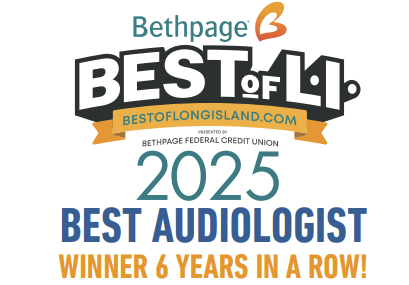
Have you utilized your ear trumpet lately? No? You don’t have one? Because that technology is centuries old. Okay, I suppose that makes sense. Ear trumpets are a bit… antiquated.
The basic shape of the modern hearing aid was developed in the 1950s. And somehow, that’s the hearing aid which has become identified in our collective consciousness. The trouble is that a hearing aid made in the 1950s is just about as out-dated as an ear trumpet. To comprehend just how much better modern hearing aids are, we have to unleash our imaginations.
Hearing Aids, Then And Now
So that you can better understand just how advanced hearing aids have become, it’s useful to have some perspective about where they started out. As far back as the 1500s, it’s possible to come across some form of hearing aid (though, there’s no proof that these wooden, ear-shaped artifacts were actually effective).
The first somewhat effective hearing assistance apparatus was probably the ear trumpet. This device appeared to be a long horn. The wide end faced the world and the small end was put inside your ear. Nowadays, you wouldn’t consider this device high tech, but back then they actually provided some assistance.
The real innovation came when someone invited electricity to the party. The hearing aid that we are familiar with was really created in the 1950s. In order to do their job, they made use of large old fashioned style batteries and transistors in a rather basic design. But a hearing aid that could be easily worn and hidden started with these devices. Admittedly, modern hearing aids might share the same shape and function as those early 1950s models–but their functionality goes far beyond what was conceivable 70 years ago.
Hearing Aid’s Modern Features
Put simply, modern hearing aids are technological wonders. And they’re constantly developing. In numerous powerful ways, modern hearing aids have been utilizing the digital technology of the later part of the twentieth century. The first, and the most essential way, is simple: power. Earlier versions had batteries that had less power in a larger space than their modern counterparts.
And with that greater power comes a large number of innovative developments:
- Health monitoring: Advanced Health monitoring software is also included in modern hearing aid options. For instance, some hearing aids can detect when you’ve fallen. Other features can count your steps or give you exercise support.
- Speech recognition: For many hearing aid owners, the biggest objective of these devices is to enable communication. Isolating and boosting voices, then, is a principal feature of the software of many hearing aids–from a packed restaurant to an echo-y board room, this feature comes in handy in many situations.
- Construction: Modern hearing aids are normally constructed out of high tech materials, so they feel more comfortable. While these new materials enable hearing aids to be more comfortable, it also enables them to be more robust. And with the addition of long-lasting, rechargeable batteries, it’s easy to see how not just the inside–but the outside–of hearing aids have advanced over the years.
- Selective amplification: Hearing loss normally manifests as loss of specific wavelengths and frequencies of sound. Perhaps low frequency sound gets lost (or vice versa). Modern hearing aids can be programmed to boost only those sounds that you can’t hear very well, creating a much more efficient hearing aid.
- Bluetooth connectivity: Contemporary hearing aids are now able to communicate with all of your Bluetooth devices. This can be incredibly useful on a daily basis. Older hearing aids, for instance, would have irritating feedback when you would try to talk on the phone. With modern hearing aids, you can simply connect to your cellphone via Bluetooth connectivity and never miss a call. You will also use Bluetooth connectivity to participate in a wide range of other electronic activities. This means simple, feedback free connection to your TV, music, etc.
The older style hearing aids no longer exemplify what hearing aids are, just as rotary phones no longer capture what long distance communication looks like. Hearing aids aren’t what they once were. And that’s a good thing–because now they’re even better.







